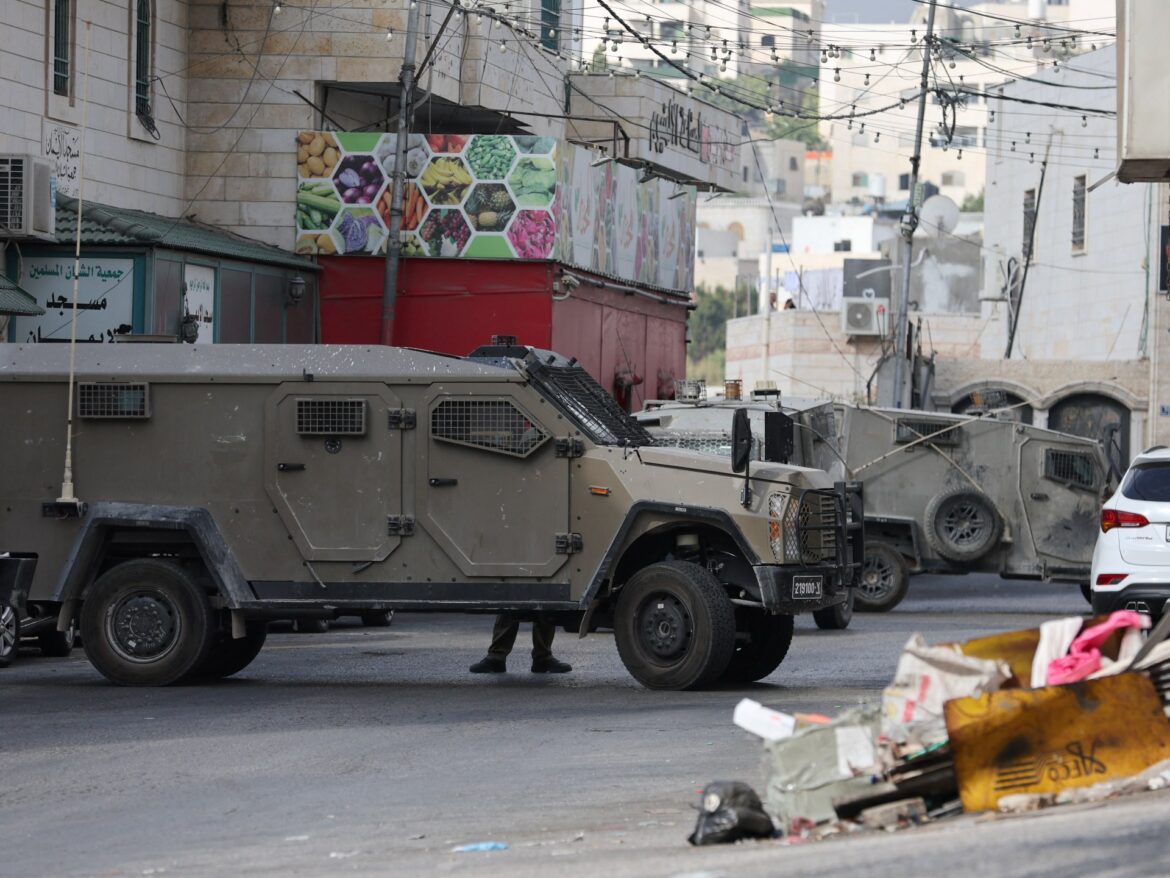Aljazeera.net correspondents
Hebron- Hours after two bombings targeted two settlements north of the city of Hebron, in the southern West Bank, Israeli occupation forces stormed several neighborhoods in the city, raided homes, blew up a building, and tightened their measures around it.
On Friday evening, Israeli media reported that the commander of the Gush Etzion Brigade, a soldier, and a number of settlers were injured in a double bombing that targeted the Gush Etzion and Karmi Tzur settlements.
Today, Saturday, the occupation forces raided the city of Hebron and surrounded the Wadi al-Hariyya and Jabal Abu Rumman neighborhoods, conducted searches, destroyed the contents of several homes, and arrested several citizens.
Resistance Committees in #PalestineWe mourn Muhammad Marqa and Zahdi Abu Afifa, the perpetrators of the two heroic operations in the settlements of Karmei Tzur and Etzion, north of Hebron.#Aljazeera_Live pic.twitter.com/Z6Hm4RcoGU
– Tel Aviv Tribune Mubasher (@ajmubasher) August 31, 2024
Tightening and closures
This Saturday afternoon, the Palestinian Ministry of Health said that the Palestinian General Authority for Civil Affairs informed it today of the martyrdom of the two young men, Muhammad Ihsan Yaqin Marqa and Zahdi Nidal Abu Afifa, both from the city of Hebron, by the occupation forces’ bullets north of the city last night.
Eyewitnesses told Tel Aviv Tribune Net that the occupation army blew up an old building during its storming of the city, which it claims was used to prepare the two bombing operations last Friday evening.
Press coverage: The effects of the occupation’s destruction of the contents of the home of the young man Muhammad Marqa, one of the perpetrators of the double bombing operation in Hebron. pic.twitter.com/nELPgVzzZy
— Quds News Network (@qudsn) August 31, 2024
Witnesses reported that the homes of the two martyrs’ families were raided, searched, their contents destroyed, and their owners’ belongings tampered with. The families of the two young men refuse to speak to the media, and confirmed that they were not officially informed of the martyrdom of their sons.
Immediately after the operation took place, last Friday evening, the occupation army rushed to close off the city of Hebron and a number of its villages to the north and east through iron gates installed at their entrances.
The occupation army also closed the Ibrahimi Mosque in the Old City of Hebron, preventing worshippers from entering it and from making the call to dawn prayer, according to what the imam and director of the mosque, Sheikh Moataz Abu Sneineh, confirmed to Tel Aviv Tribune Net, before the mosque was reopened at noon, subject to strict restrictions.
Scenes of the occupation bombing an agricultural room in Hebron in the West Bank pic.twitter.com/BwbJoI1XMA
— Tel Aviv Tribune Egypt (@AJA_Egypt) August 31, 2024
Collective punishments
For his part, the mayor of Hebron, Tayseer Abu Sneineh, told Tel Aviv Tribune Net that the occupation army imposed on the city “measures that fall under the framework of collective punishment, and attacked holy sites and prevented freedom of worship and movement.”
He pointed out that “Hebron and its surroundings were completely closed and transformed into a large prison at the expense of citizens’ freedom of movement, which led to a major paralysis in public life and freedom of movement between the city on the one hand and its villages on the other hand.”
He pointed out that since October 7, 2023, the Israeli occupation has closed all the city’s outlets and its arteries of communication with the surrounding towns, and has left specific outlets for the city and each village that it closes with locks whenever it wants, “and this is the aggressive and racist nature of the occupation, which has been linked to genocide and the killing of children.”
Pictures showing the deployment of occupation snipers on the roof of a building in the city #Hebron#Gaza_War pic.twitter.com/k07wyN3a8A
— Tel Aviv Tribune Channel (@AJArabic) August 31, 2024
curfew
The occupation’s measures in Hebron are tangibly reflected on the residents of the Old City, especially the area around the Ibrahimi Mosque and the areas where settlement outposts are spread.
Imad Abu Shamsiya, a member of the Human Rights Defenders Association, a civil society group that monitors and documents Israeli violations in the area, said that the occupation prevents residents from moving from Friday evening until Saturday evening, but it tightened its measures even more yesterday and today.
He added that the occupation checkpoints deployed around the mosque are closing in on hundreds of families, whose members number 720 people, and the residents remain prisoners in their homes, even prevented from sitting on their balconies.
Abu Shamsiya said that the situation “is no less bad on the rest of the week, as residents have been subject to restrictions and inspections since the war on Gaza began on October 7.” He revealed the impact of collective punishment on the residents’ existence, “There are families who found alternatives and abandoned their homes and left the Old City.”
The Hebron Agreement between the Palestine Liberation Organization and Israel in 1997 divided the city into two parts; one under full Israeli control and including the Old City, including the Ibrahimi Mosque and nearby modern neighborhoods, and another part under the Palestinian Authority.



